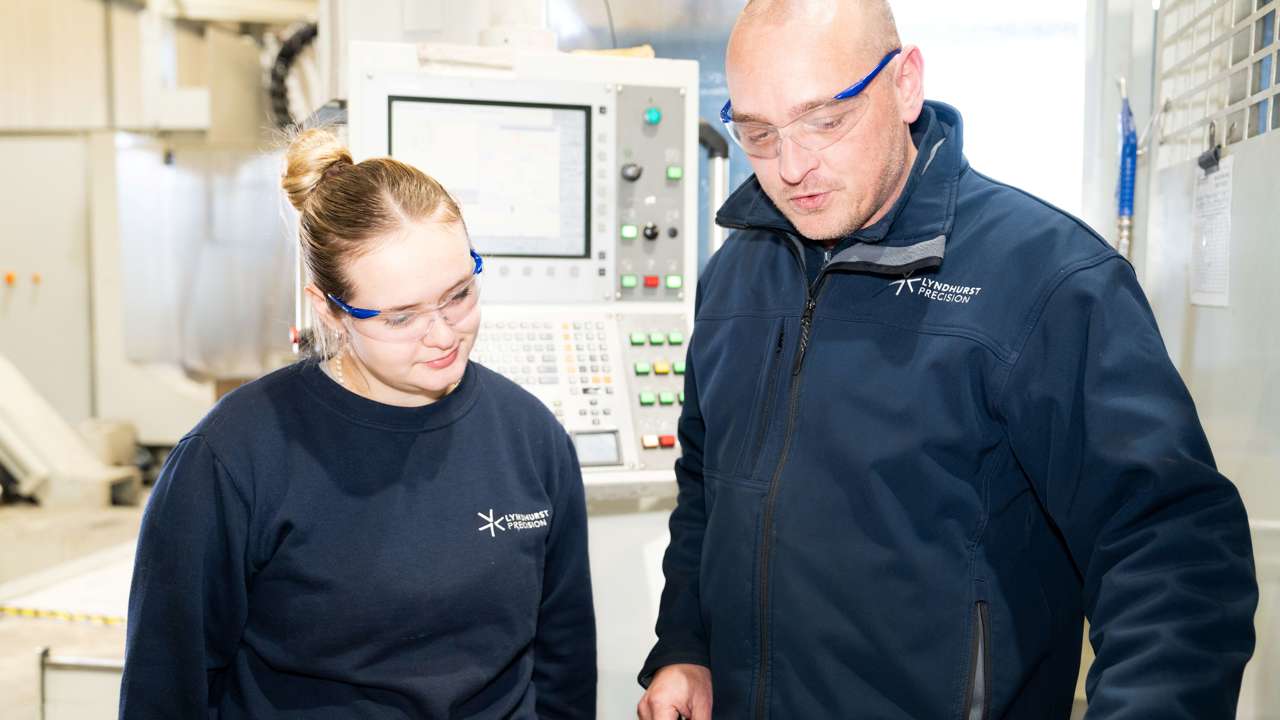How engineering and manufacturing businesses are using T Levels as a route to recruitment
By EngineeringUK
Engineering and manufacturing firms across England are feeling the pressure of the industry’s long-standing skills shortage, making it hard to find and retain the talent their business needs.

Is there a solution?
Many small and medium-sized businesses have decided to tackle this challenge head-on by hosting T Level students on their industry placements: bringing an extra skilled pair of hands to the shopfloor. They’re finding it’s both a boost to productivity and their team’s leadership skills, while also helping them secure future talent essential for succession planning.
What are T Levels?
T Levels are a post-16 technical qualification designed in partnership with employers to help young people gain the knowledge and practical experience they need to succeed in the workplace.
Each T Level course includes a 45-day industry placement with an employer, which gives businesses a chance to bring in motivated young people, introduce them to the business, and develop their skills on real projects.
One of the great benefits of the placement is the opportunity for businesses to use it as an extended interview, seeing the students’ skills in action over time without the commitment of hiring them as an apprentice or employee straight away.
The placement is also designed to be flexible, to fit around the business’s needs: it can be run in blocks, day release or even shared with another employer over a two-year period.
T Level industry placements are a low-risk way to grow your future workforce while supporting the development of young talent in your community.
Do students come with existing skills?
T Levels were developed in collaboration with employers to reflect real business needs and industry challenges. This means students arrive with a solid foundation of technical knowledge and practical skills that enable them to contribute from day one. As a high-quality qualification, equivalent to 3 A Levels, T Levels also attract motivated learners who must meet specific entry requirements and undergo rigorous assessment throughout the course.
Sally Moxon, People Director at energy engineering and manufacturing firm Farrat, says: “We liked the idea of working with T Level students as they sit between apprentices – where we teach someone from scratch – and graduates, who may lack experience in the workplace. T Levels are the perfect blend; the students add value to the business quickly because they have the technical knowledge.”
How can T Level students help plug the skills gap?
Many businesses have gone on to offer their T Level students a paid role at the end of their placement.
Manchester-based engineers, R&B Switchgear Group delivers electrical switchgear and power engineering solutions across the marine, transport and energy sectors. With some of their staff nearing retirement, they decided to try offering T Level industry placements.
R&B’s Technical & Training Manager Gavin Chadwick says: “Over the past two years we've hosted 12 T Level placement students, and taken five of them on. We see this as a huge success. They can fit into the business and build their career paths into some of the careers we're short of.”
What other benefits can T Level students bring?
As well as bringing fresh ideas and enthusiasm to the job, many employers report an increase in productivity after taking on T Level students.
It’s also a chance to boost diversity within the team, as Sally Moxon explains: “At Farrat we’re committed to bringing a diverse workforce into the business, and T Levels help us to do that. Engineering and manufacturing is very male dominated. We wanted to use as many options as possible, such as T Levels, to bring in that diversity.
The more diverse the workforce, the more diverse the thought process, and the more innovation and creativity you get within the business. It’s a win-win.”
How easy is it to set up a T Level industry placement?
Very! Here’s a quick step-by-step guide to help you take on your first T Level student:
3 easy steps to arranging T Level industry placements

-
Step 1 Visit the T Level website and enter your postcode to find out which colleges offer T Levels near you
-
Step 2 Get in touch with your local college or school. You could hold interviews to choose the student that’s right for you and then, once you’ve chosen them, the college or school can support you plan the placement. They'll also and help identify any tasks where health and safety may need addressing.
-
Step 3 Take on your T Level student and immerse them in your business!

At Farrat we’re committed to bringing a diverse workforce into the business, and T Levels help us to do that. Engineering and manufacturing is very male dominated. We wanted to use as many options as possible, such as T Levels, to bring in that diversity. The more diverse the workforce, the more diverse the thought process, and the more innovation and creativity you get within the business. It’s a win-win.
— Sally Moxon, People Director, Farrat




